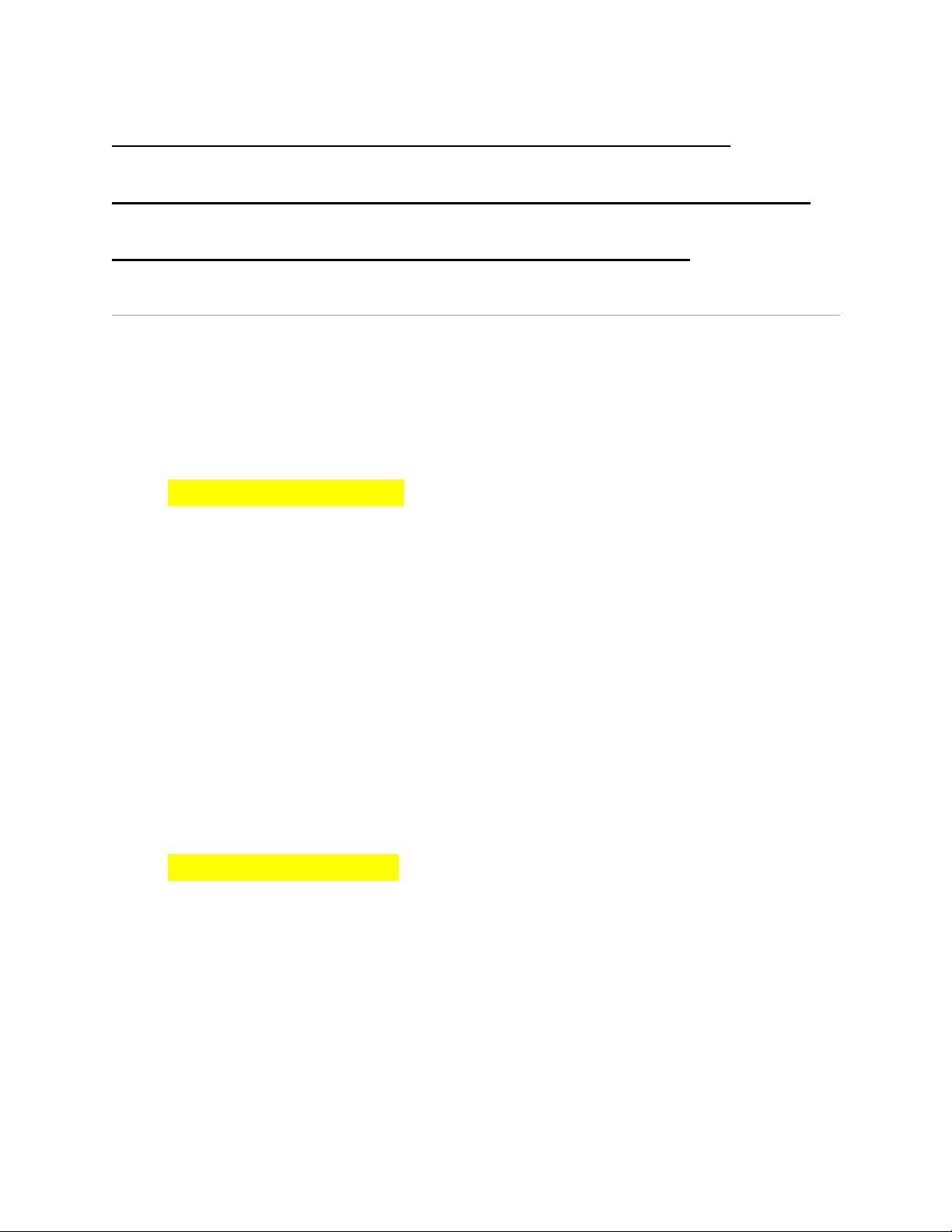
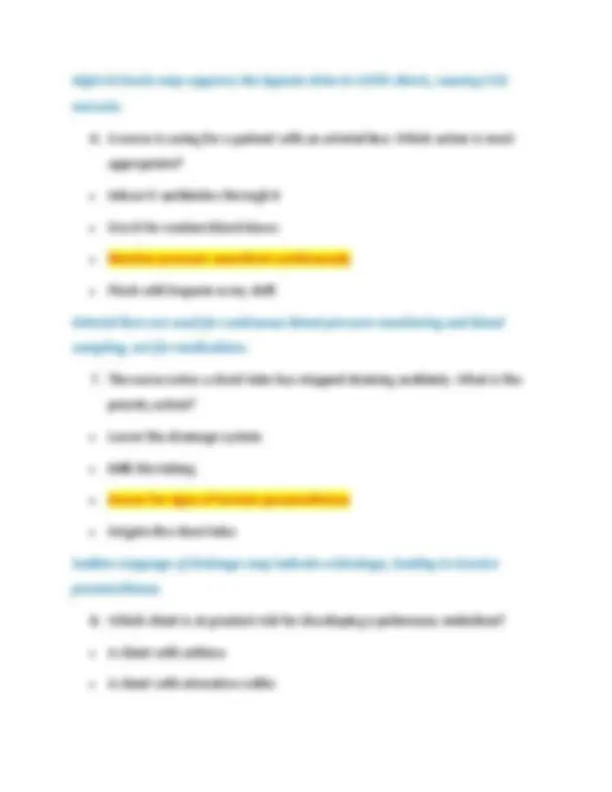
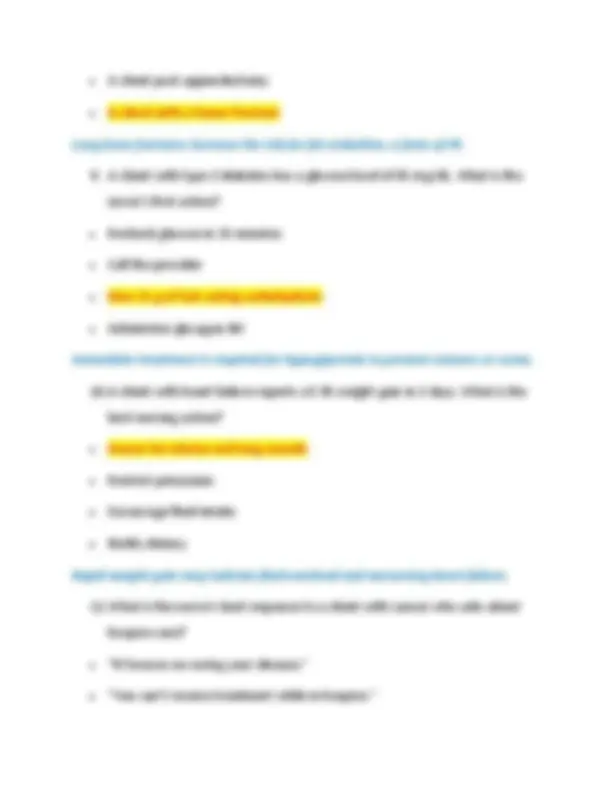
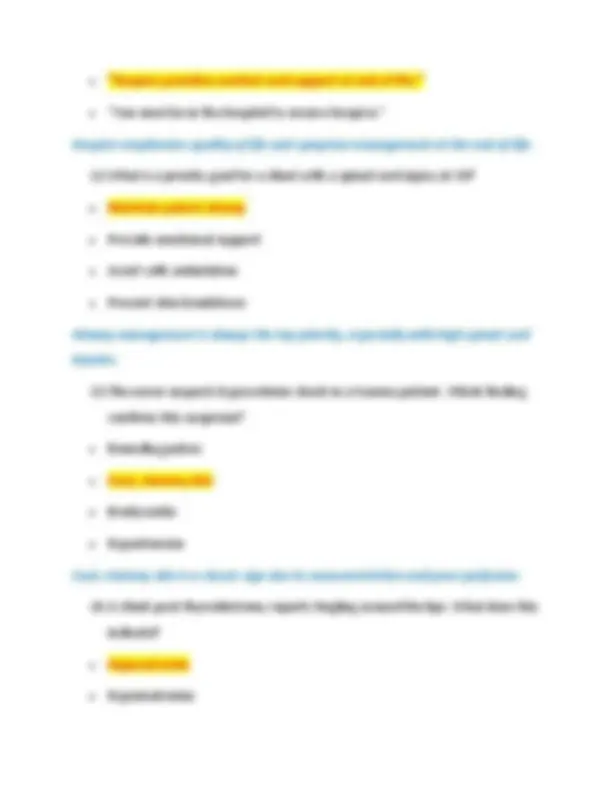

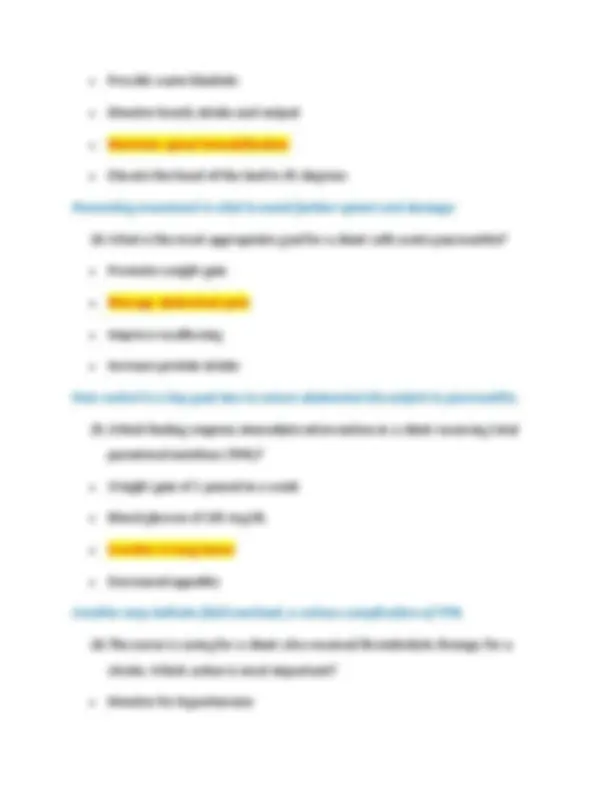
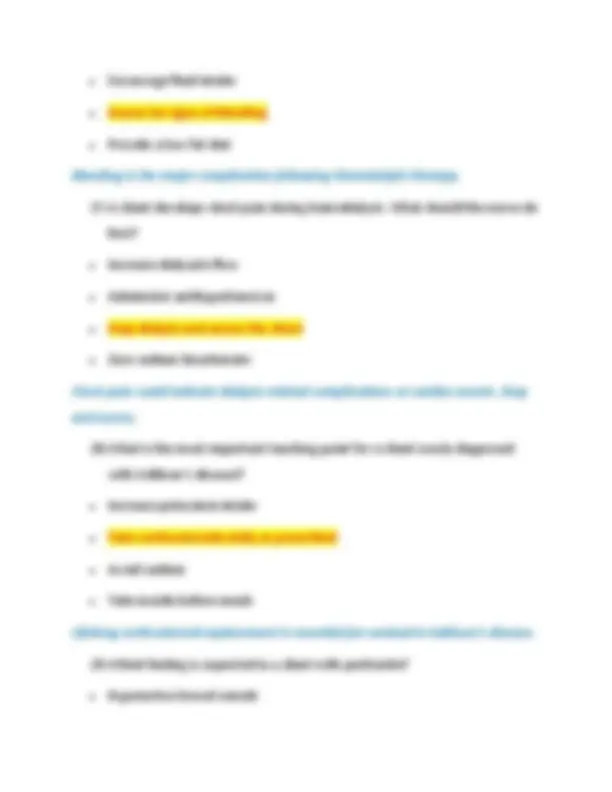
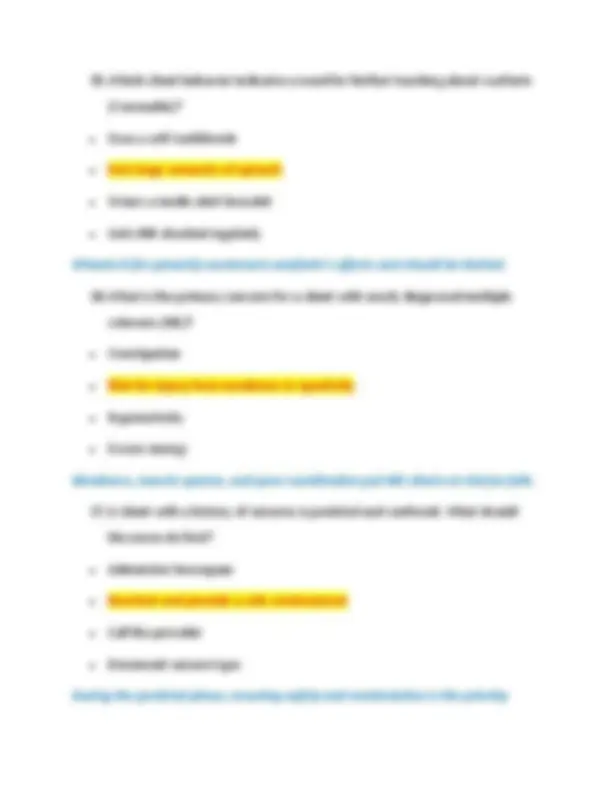
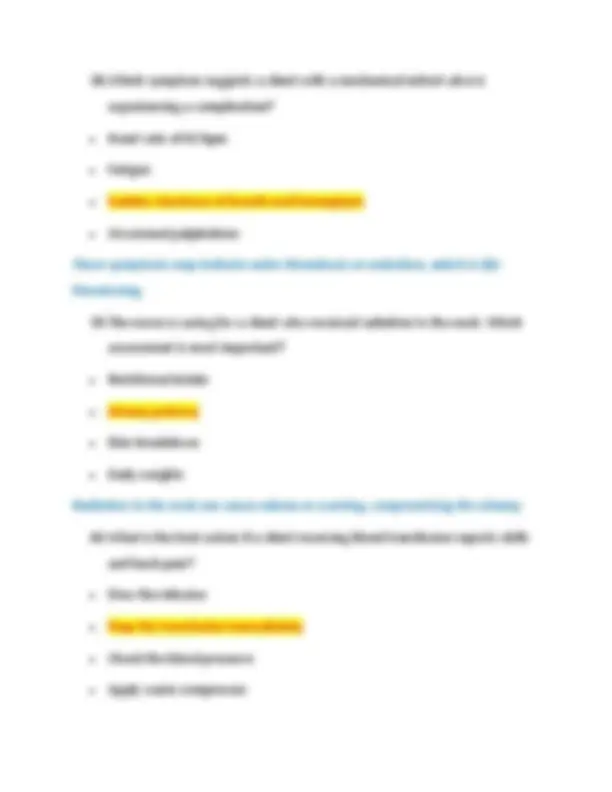
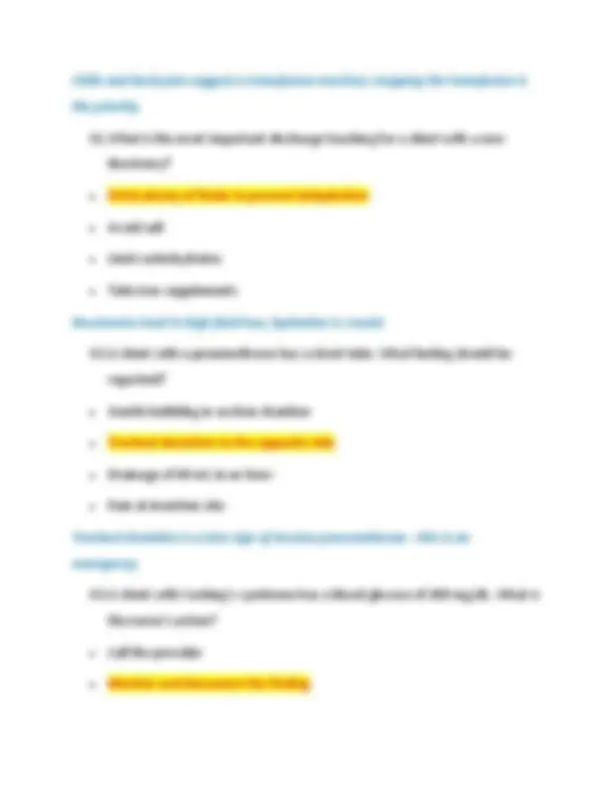
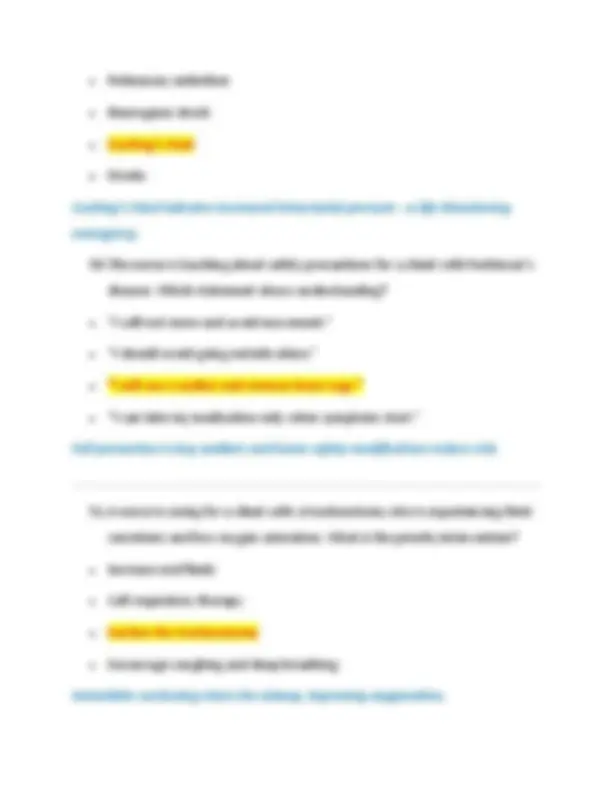
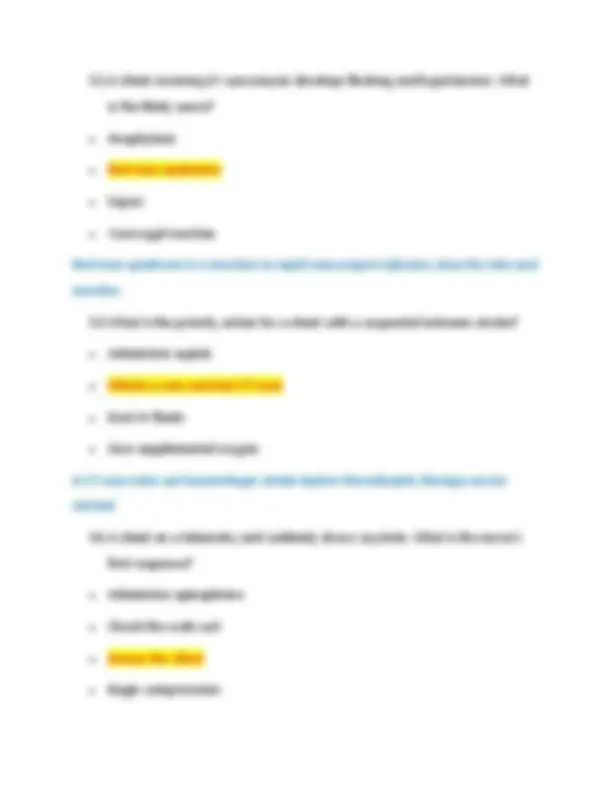
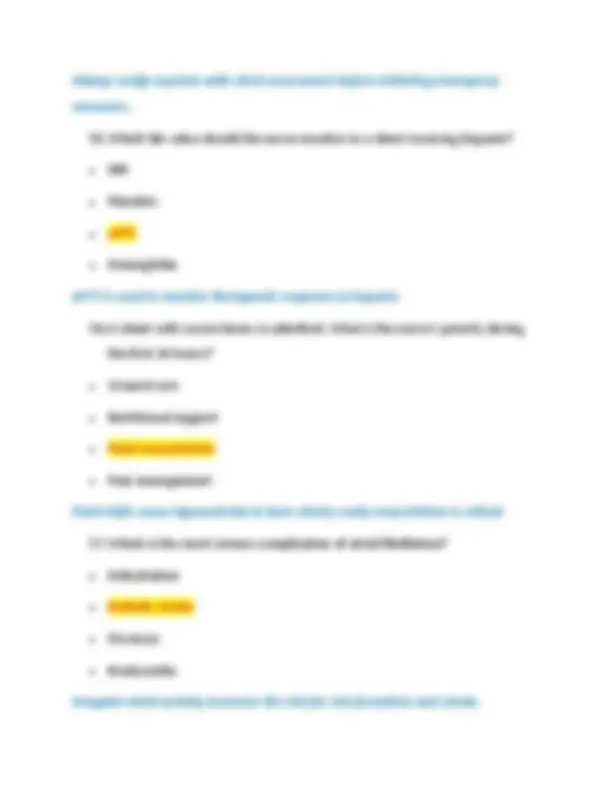
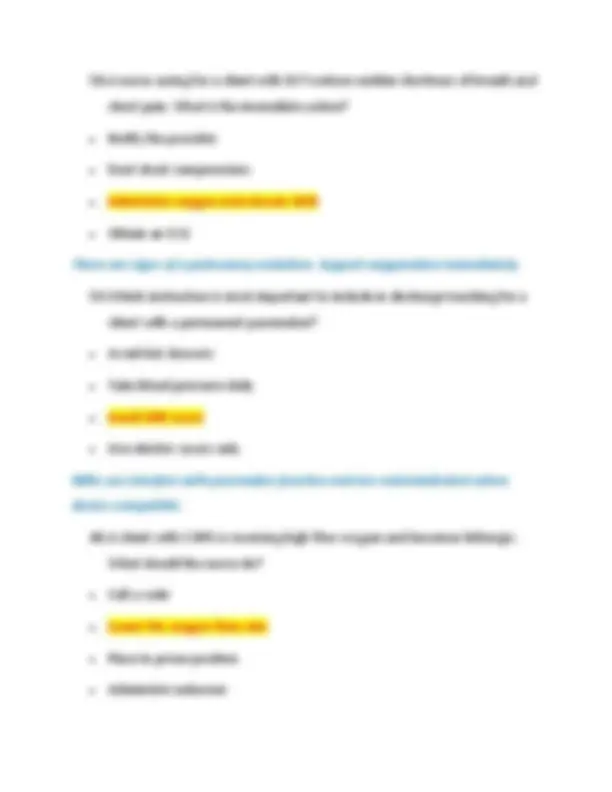
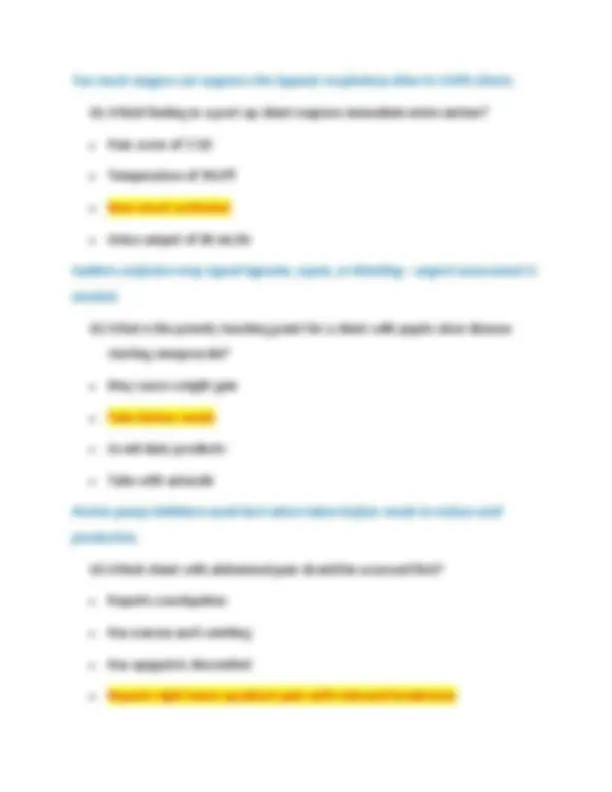
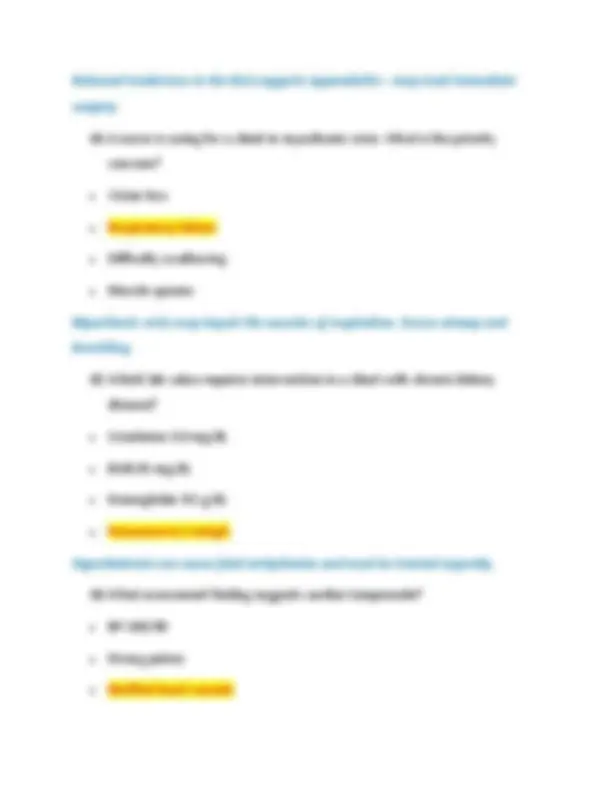
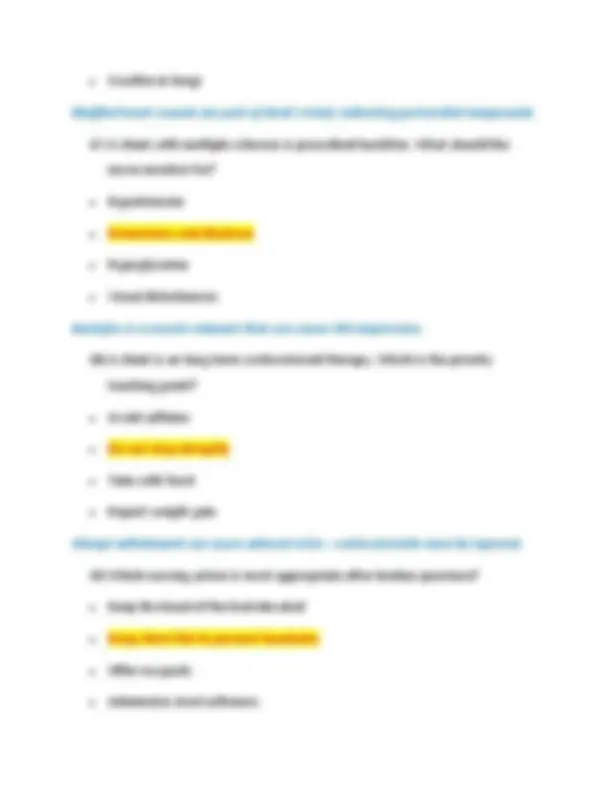
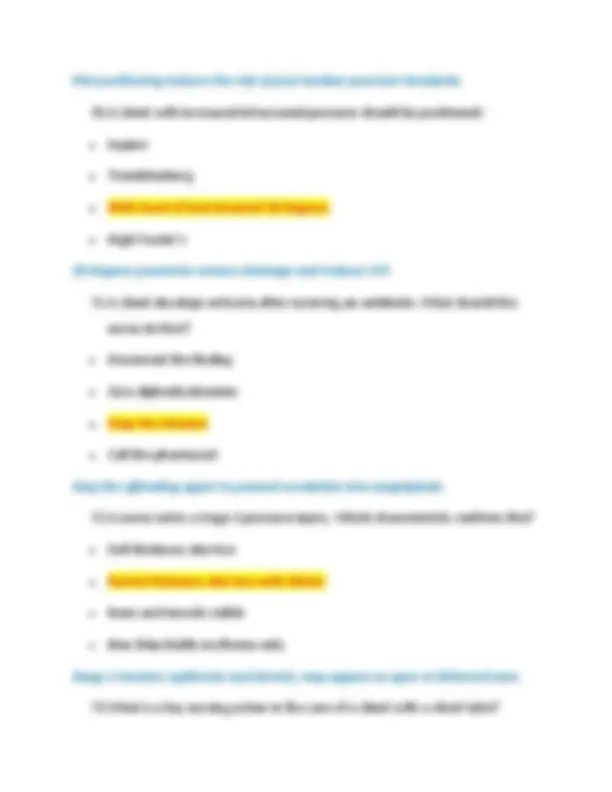
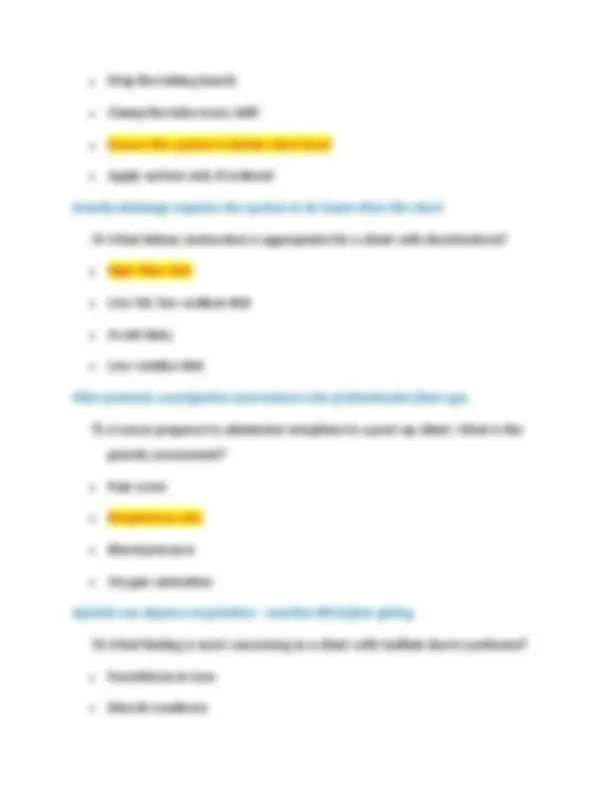
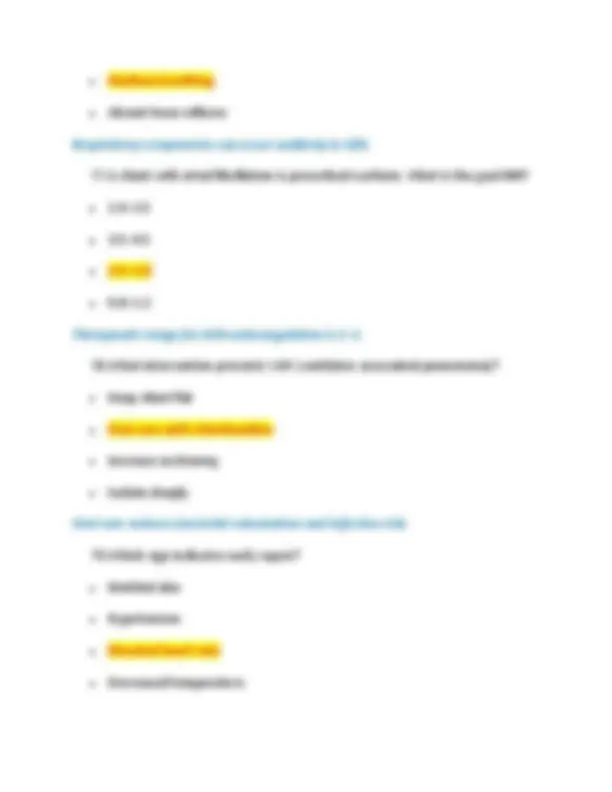
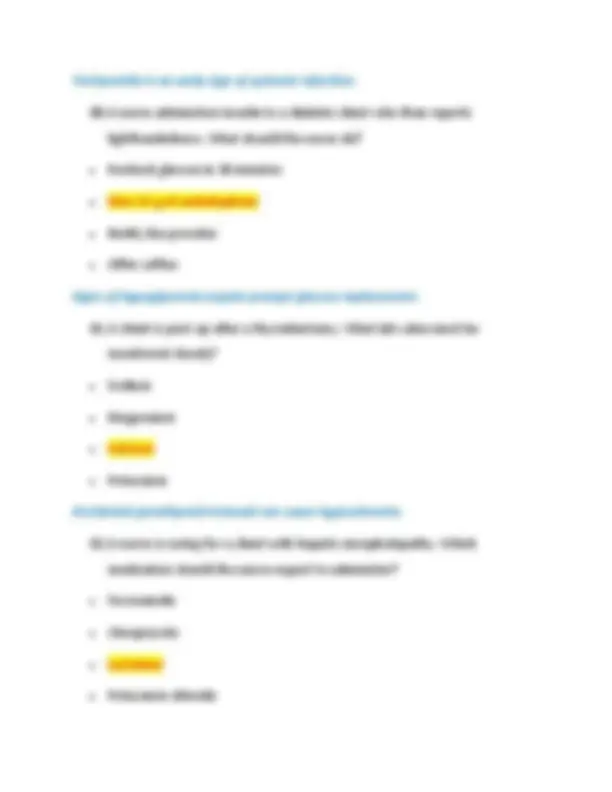
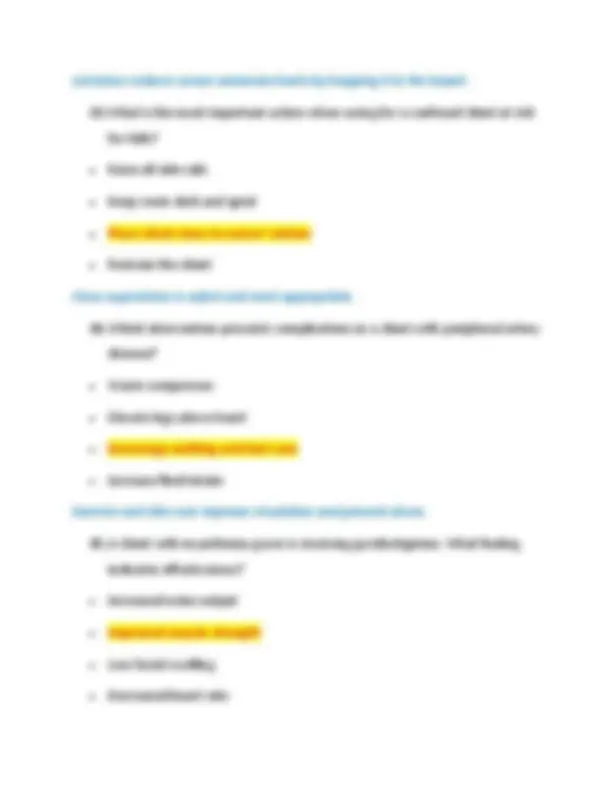
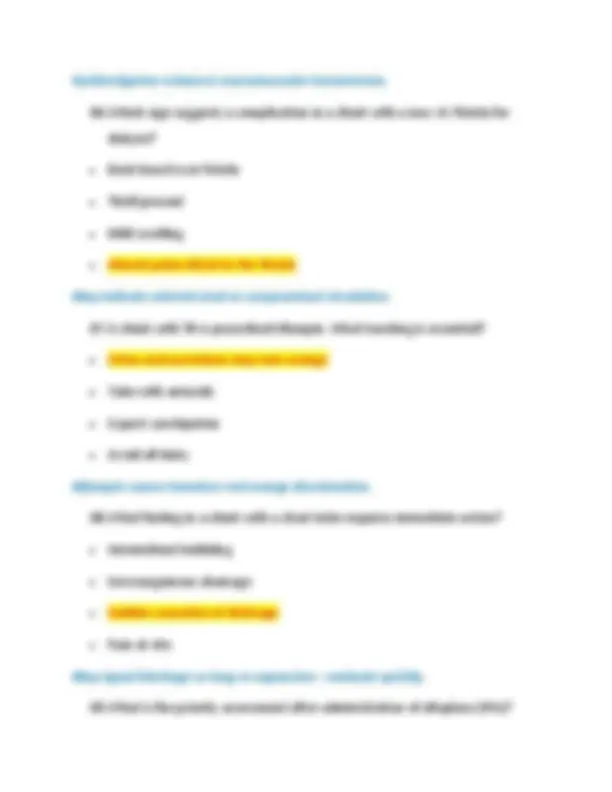
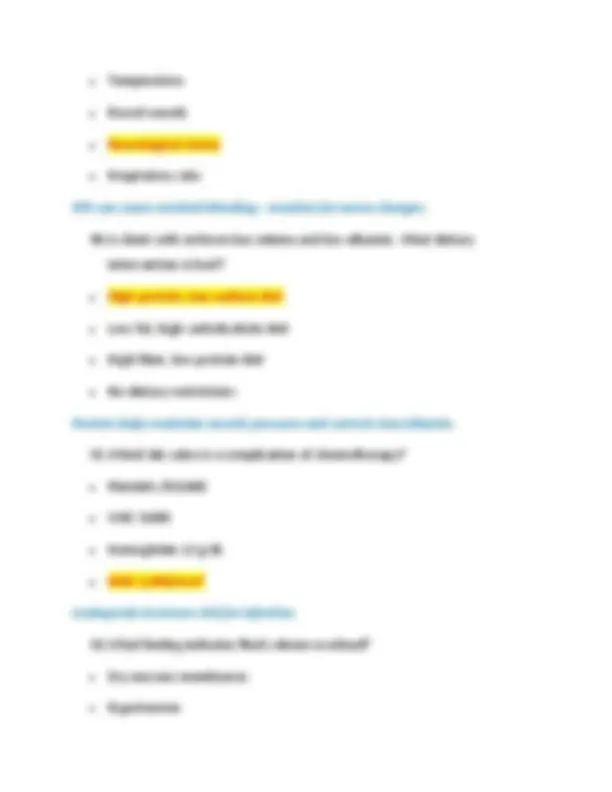
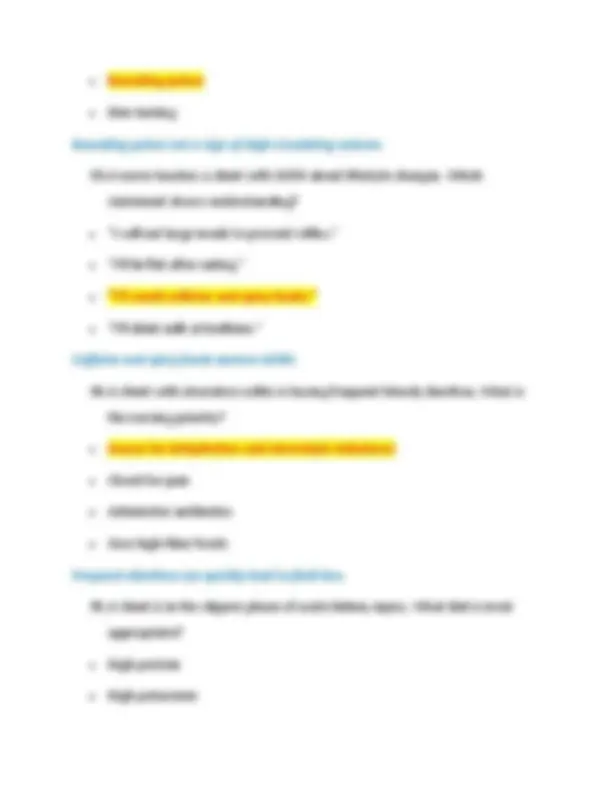
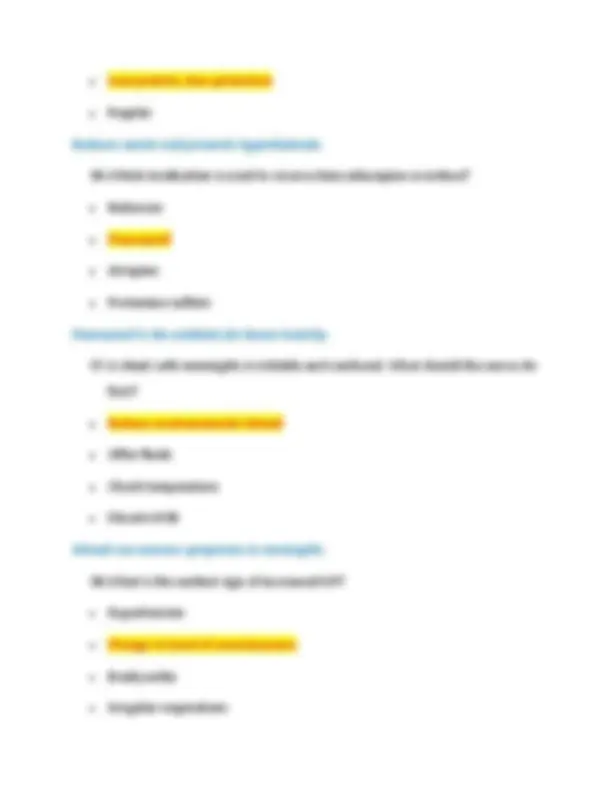
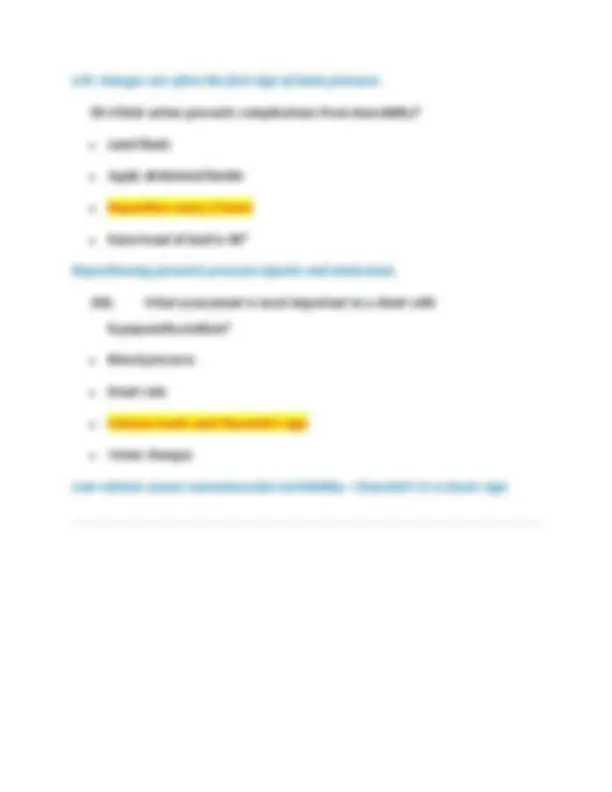


Study with the several resources on Docsity

Earn points by helping other students or get them with a premium plan


Prepare for your exams
Study with the several resources on Docsity

Earn points to download
Earn points by helping other students or get them with a premium plan
Community
Ask the community for help and clear up your study doubts
Discover the best universities in your country according to Docsity users
Free resources
Download our free guides on studying techniques, anxiety management strategies, and thesis advice from Docsity tutors
BSN NSG 4513 Adult Health III – Cumulative Final Questions And Correct Answers (Verified Answers) Plus Rationales 2025 Q&A | Instant Download PDF
Typology: Exams
1 / 34

This page cannot be seen from the preview
Don't miss anything!



























35.Which client behavior indicates a need for further teaching about warfarin (Coumadin)?
38.Which symptom suggests a client with a mechanical mitral valve is experiencing a complication?
52.A client receiving IV vancomycin develops flushing and hypotension. What is the likely cause?
Always verify asystole with client assessment before initiating emergency measures. 55.Which lab value should the nurse monitor in a client receiving heparin?